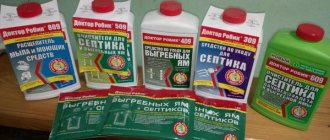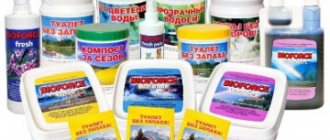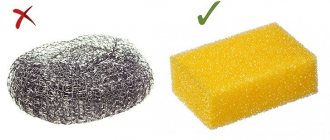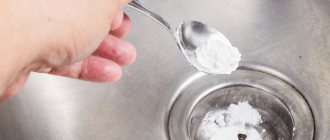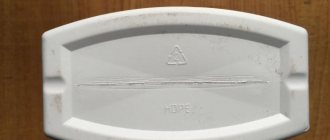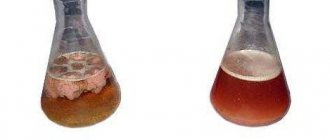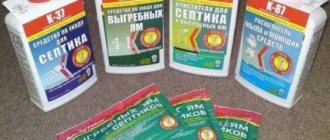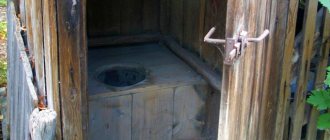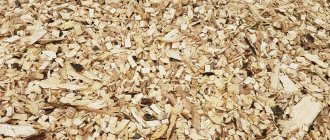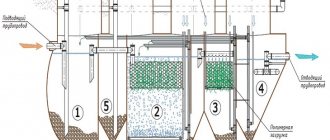One of the most unpleasant aspects of servicing local sewerage is pumping out the contents of septic tanks and drainage pits. Firstly, the pumping service must be paid for, and secondly, during the service an extremely unpleasant odor spreads. To make it possible to clean local sewerage tanks less frequently, it is recommended to use special biological products.
No matter how impressive the volume of the cesspool, over time it will still be necessary to clean the tank. Calling a vacuum cleaner is not a cheap “pleasure,” so it makes sense to take measures to reduce the number of pumpings, thereby saving the family budget. An effective way to save money are biological products intended for septic tanks and drainage pits. Let's figure out how they work.
Using biological products to clean a cesspool
The method of cleaning the contents of a cesspool, which uses all kinds of biological products, is called bacterial-enzymatic.
Each of these drugs is a friendly family of microorganisms of one type or another that feed on waste matter, decomposing it into simpler and absolutely harmless substances.
As a result, their volume is significantly reduced.
All types of bacteria are divided into two large groups:
- Anaerobic: the vital processes in the bodies of these animals are organized in such a way that they do not need oxygen at all. It is precisely these crops that are suitable for ordinary cesspools: the user just needs to inject the drug into the sewer and no longer need to worry about its fate. All this microbe needs is household waste as food.
- Aerobic: in terms of productivity, these bacteria are an order of magnitude ahead of their anaerobic colleagues, but they cannot live without oxygen. And simple ventilation will not do - fresh air has to be supplied by a compressor, which requires additional costs and makes the autonomous sewage system energy dependent. Another drawback is that due to intense air exchange around the cesspool or septic tank, an unpleasant odor can spread.
Biological products can be supplied in the following forms:
- Powders or granules: the bacteria present in such products remain in conservation mode. To bring them back to life, the drug must be diluted in water.
- Liquids: such biological products are characterized by high productivity. They usually contain a whole range of crops focused on processing a wide range of substances.
- Tablets: these antiseptics are just as convenient to deliver and store as powder ones, but do not require prior dilution in water.
In addition to the listed forms, which are the most common, bacterial colonies can be supplied in special containers, soluble bags and other types of packaging.
Types of microorganisms used in pits and toilets
Several types of bacteria are used in the manufacturing process:
- anaerobic - reproduce and act in the absence of oxygen;
- aerobic – microorganisms require oxygen for activity.
Sometimes drugs combine two types of bacteria at once, which greatly increases their effectiveness and cleaning time. Such products help to recycle even solid (paper) particles.
For septic tanks, the most suitable option would be substances containing cultures of anaerobic bacteria.
Use of chemicals
The second method of waste decomposition is based on chemical reactions.
For this purpose, various substances are used that can decompose and neutralize sewage.
Such products, as a rule, are not very expensive, but can be dangerous to humans, so they are used in compliance with safety regulations.
Let's look at the most common chemicals:
- Formaldehyde: Also known as formalin, this drug is affordable, but due to its high toxicity, it is used less and less and is considered obsolete.
- Nitrate oxidizers: substances that are much less hazardous to human health and the environment. Moreover, after processing with some of them, for example, nitric acid, wastewater can be used as fertilizer. However, this does not mean that nitrate oxidizers are ineffective: they do an excellent job of eliminating bacteria living in feces, eliminating unpleasant odors and diluting wastewater, making it easier to pump out.
- Ammonium salt compounds: when mixed with water, they form a strong alkali that effectively decomposes waste and destroys even the strongest and most persistent odors. They have two drawbacks: they are neutralized by detergents and are extremely dangerous to human health (to avoid vapors entering the air, the cesspool must be cleaned using a vacuum method).
A well-known drug, bleach, is still used. This product, like formaldehyde, is very dangerous, but due to its low cost it remains in demand.
Selection principles
When purchasing a product for septic tanks, take into account the composition, the number of bacteria, and the processing period. To choose the right type, it is recommended to follow some rules:
- A type of bacteria. The drug is selected based on the area that needs cleaning. Not all types of microorganisms cope, for example, with feces containing harmful chemicals. Therefore, each package indicates for which cases it is best to use it.
- Level of microorganisms. This quality determines the speed at which feces are processed and how often it will have to be used.
- Volume. Calculated based on the volume of the latrine. If there is not enough bacteria, they will die because they will not be able to organize into a colony. If there is an excess, microorganisms will begin to eat each other.
- Dry residue. Indicated on the packaging, it is a product of the vital activity of microorganisms. The lower it is, the more effective the product.
- Best before date. It is prohibited to use a drug that has expired.
For the first use of the product, it is recommended to use starter preparations. They will help prepare waste for processing by creating primary colonies of bacteria in it.
What is the best antiseptic for a cesspool?
To clean wastewater, you should certainly strive to use biological products, and here’s why:
- With high efficiency, bacteria are absolutely environmentally friendly. The water they purify can be used for watering your garden plot or discharged into a natural reservoir. Fecal matter and other waste are converted into mineral fertilizer, which can also be safely transported to the garden. If any of the chemicals (except for some nitrate acids) get into the soil, water or air in the form of vapors, an environmental disaster will not be avoided.
- Microorganisms used to clean cesspools are indifferent to metals and polymers, while chemicals corrode such materials easily and very quickly.
- The introduction of beneficial bacteria into the sump only needs to be done once. After this, the microbes will not only constantly clean, but also multiply, multiplying their own productivity. Chemicals, on the contrary, will have to be added again and again.
However, biological products cannot be used in all cases. They die in the presence of aldehydes, chlorine, acids, alkalis and phenols in wastewater, as well as at temperatures below +3 and above +30 degrees (only some can withstand temperatures up to +45 degrees).
Differences between biological and chemical antiseptics
Previously, chemical antiseptics were the most popular, but recently many owners of private houses prefer biological preparations.
A chemical antiseptic for drainage pits differs in many ways from a biological agent:
- Chemicals are suitable for harsh climates because the active ingredients remain active at any temperature. But biological agents for drainage pits should be used at temperatures between -4 and +30 degrees, otherwise the bacteria will die.
- When using chemical antiseptics, there is no need to create separate drains, since their action is not affected by household chemicals. Even chlorine does not harm such preparations. As for living microorganisms, they are immediately killed by chemicals for sewer pits.
- Substances contained in chemicals can react with sewer elements, especially metal ones. In addition, their entry into the ground is harmful to the environment. Therefore, the use of a chemical antiseptic for the toilet is allowed only in sealed tanks, built primarily from concrete or polymer materials. As for biological preparations, they are absolutely safe for nature, so wastewater purified with their help can be discharged into the ground, and the requirements for such sewer systems are not so stringent.
- When using chemical antiseptics, decomposition products cannot be reused, since they contain many harmful substances. But compost formed under the influence of biological preparations serves as a good fertilizer.
Review
It's time to get acquainted with the most popular vehicles available on the domestic market. Let's start with biological products:
- Sanex: before use, this powder must be infused in warm water for about 20 minutes. This is a very important procedure; without it, Sanex, regardless of quantity, will be useless. The “menu” of these bacteria includes fecal matter, paper, organic inclusions, fats and starch. Under the influence of the drug, the condition of sewage pipes improves.
- Doctor Roebik: a sachet of product is designed for 5 cubic meters. m of wastewater. The composition must be poured into the toilet and the cistern should be emptied several times. The value of the cultures included in “Doctor Robik” is that, in addition to organic matter, they eagerly absorb detergents and even phenols.
- Micropan: This product comes in a variety of forms - tablets, liquid and powder. Works well with organic waste and paper.
- “Gorynych”, “Tamir”, “Vodograi”: biological products produced in Russia and the CIS countries. Attract consumers with a combination of high efficiency and low cost
As for chemicals, the greatest demand is for the products of the Russian ones, Atlantis, Khimoptovik, the French Septifos Vigor, the same Roebik (USA) and many others. Some are engaged in the sale of a wide range of biological products and chemicals for treating sewage in autonomous and centralized sewers.
Cesspools and drainage wells can be cleaned without resorting to the services of a sewer truck. Cleaning drains using bacteria is a modern way to get rid of waste.
You will find step-by-step instructions for installing a septic tank made of concrete rings here.
If the operating rules are followed, the well can serve for many years. Cleaning a well is an important undertaking. Here https://aquacomm.ru/vodosnabzenie/zagorodnyie-doma-v/avtonomnoe-vodosnabzhenie/istochniki/kolodets/chistka-svoimi-rukami.html you will learn how to clean a well with your own hands.
Impact effects
Recycling the contents of a cesspool is aimed at eliminating harmful substances and organisms that are formed from human waste products. This can be either feces or other compounds - acids, paper, starch, soap suds, fats.
Remedies help prevent:
- development of pathogenic microbes;
- release of toxic fumes;
- destruction of dry closets;
- clogging and deposition of masses on sewer pipes;
- the appearance of odors;
- development of allergic reactions in humans.
Most drugs, after treating septic tanks and cesspools, convert all harmful substances into liquid, which can subsequently be disposed of without fear of causing damage to the environment, or used for technical needs.
Bioactivators help to liquefy hardened feces on the walls or bottom of the cesspool and eliminate all pathogenic microorganisms in them.
Under the influence of the active activity of beneficial bacteria, toilets are completely cleansed of toxic fumes that affect human health and well-being. The death of all pathogenic microorganisms that are responsible for the development of unpleasant odors occurs.
Where can I buy?
Today, a resident of any region of the Russian Federation can order this or that product on the website of the manufacturer or official dealer. The product will be delivered no later than 3 days later. You can also go to a specialized store to purchase. In the capital, antiseptics for cesspools are sold by:
- shopping (3rd Perova Polya passage, 4);
- (Plekhanov St., 4);
- trading house "SlavAqua" (Yeniseiskaya str., 1).
Residents of St. Petersburg and the surrounding region can contact the stores of the following companies:
- “UniSeptik” (Vatutina St., 17);
- “Plast Product” (Alexander Nevsky Ave., 2);
- “SlavAqua” (Peskarevsky Prospekt, 150).
Price
The cost of biological products varies widely - from 177 rubles. up to 3 and even 5 thousand rubles.
The most affordable, of course, are the products made (more precisely, grown) in Russia and the CIS countries.
- For a half-liter bottle of Gorynych you will need to pay only 177 rubles. This is the most inexpensive drug.
- A bottle of Tamir with a volume of only 30 ml will cost 380 rubles.
- A box of the biological product “Vodograi” will cost from 500 to 900 rubles, depending on the volume.
- The price of the Sanex bioactivator ranges from 300 to 700 rubles. per package depending on its size.
Imported compounds are several times more expensive. Their cost ranges from 3 thousand rubles, and the cost of American products can reach 4.5 - 5 thousand rubles.
Chemical antiseptics cost from 200 rubles. (formaldehyde, bleach) up to 1500 rub. (nitrate oxidizers) per package.
Principle of operation
These are tools that help process waste in order to further obtain fertilizer from it. They consist of bacteria that process feces - find out more about bacteria for septic tanks.
The composition contains one or more types of bacteria. The combination of several types has a more powerful effect, speeding up the processing process.
Microorganisms entering the septic tank begin to engage in active activity, during which gases, chemicals and other waste are released. Basically, the waste generated in this way is safe to meet technical needs or be disposed of on your site.
The cleaning process can last from 3-4 days to a month, depending on the type of drug and the quantitative content of bacteria in it.
Reviews
Judging by numerous messages from participants in online forums, chemicals for cleaning cesspools are gradually becoming a thing of the past. They allow you to get rid of the unpleasant odor, but to pump out the contents of the septic tank you still have to call a sewage treatment machine (use as fertilizer is not allowed), and the volume of waste, contrary to expectations, is almost not reduced.
The most unpleasant thing is the complexity of use, because in this case you have to follow many safety rules: wear a mask, gloves, etc. At the same time, fears about the ineffectiveness of biological products are becoming less and less justified, since with the development of biotechnologies, the “survivability” and productivity of bacterial cultures growing. Under their influence, the volume of fecal matter noticeably decreases, and purified water flows better into the ground. Thus, the pit has to be emptied much less frequently.
Most users use the drug Sanex. However, at the same time the so-called “Grey” waste coming from the kitchen sink (if detergents are used) and the washing machine must be collected in a separate container. With more expensive drugs like Dr. Roebik doesn't need to do this. Such compositions easily cope with household chemicals, which has been tested by many users.
If cold and hot water supply is no longer so difficult to install in a country house, then residents of private houses still rarely boast a sewerage system. The Termit septic tank is an excellent solution for equipping an autonomous sewer system.
You can read reviews about the Tank septic tank in this block.
What to choose
Among chemical cleaning agents, the most popular are nitrate oxidizers (nitrogen). They are expensive, but are not carcinogenic like formaldehyde. Chloride substances are not recommended for use, since exposure to chlorine vapor negatively affects the human body.
Popular bioactivators include:
- The drug "Sanex";
- The drug "Micropan";
- Remedy "Doctor Robik".
If the wastewater contains soapy substances that microorganisms do not like, you need to choose a Fatcracker septic tank. It is specifically designed for this type of cleansing. Doctor Robik also neutralizes alkalis well.
If you need compost, use the Oxygenator preparation. This biopowder perfectly forms “early ripening” compost for fertilizers.
Types of drugs
- Description: “Septic tank-Biogranules”
Biogranules are used for cleaning septic tanks and cesspools. The drug “Septic-biogranules” processes sewage, turning it into a harmless liquid. To activate the growth of microorganisms contained in biogranules, you need to add the contents of the package to a jar of water and leave for at least 20 minutes. Then the liquid from the jar is poured into a cesspool or drain hole.
Follow the instructions strictly and do not use the home toilet for 15 hours so that microorganisms can adapt to the new environment. During this time, all pipes will be completely cleared of impurities. It is necessary to clean the sewer with biogranules once every 7-8 days.
- Description: "Doctor Robik"
The bacteria of this drug are able to survive in an aggressive chemical environment. They recycle everything except iron, wood and plastic:
- Fat;
- Phenol;
- Material;
- Washing powder solution;
- Cleaning powders.
- Description: "West Treat"
This septic tank will contain anaerobic microcultures for processing fecal matter and household waste. This type of bacteria is well adapted to aggressive chemistry. The drug completely eliminates unpleasant odors, reduces the volume of waste several times, and cleans the drainage system.
- Description: "Septi Treat"
The drug contains enzymes, saprophytic microflora and several types of soil microorganisms. Septi Treat converts fecal matter into valuable fertilizer.
When using, monitor the moisture level of the waste. If the sewage has dried, you should add several buckets of water to the hole.
- Description: "Oxygenator"
This bioactivator perfectly forms compost for fertilizer. Reviews: The Oxygenerator drug processes not only fecal matter, but also straw, kitchen waste, leaves and sawdust. You receive high-quality compost fertilizer for the production of mushrooms, berries, and any garden crops. The formation of compost is not accompanied by clouds of flies and a putrid odor. To activate the Oxygenator, boiled water is used.
Description: "Septifos"
This is a chemical powder for a cesspool that destroys dangerous microbes. The action of the device is aimed at disinfecting the contents of the cesspool and eliminating the unpleasant “aroma”. "Septifos" turns an unpleasant odor into the fragrance of eucalyptus.
How to use
- When using ammonium preparations, processed waste should be removed from the site using a sewer truck. It is prohibited to store recycled liquid and waste on the site and use it for fertilizer.
- The use of nitrate oxidizers (nitrogen) for processing sewage is the safest among chemical agents. Recycled material can be used to water compost heaps. Prices for septic tanks containing nitrogen are quite expensive.
- When using bioactivators, ensure a sufficient level of moisture in the cesspool. In an insufficiently humid environment, microorganisms cannot function effectively. If the liquid level is low, simply add water to the sump.
- Remember that with irregular use of the country toilet, the mobility of bacteria decreases: they need a nutrient medium. If the toilet is not used for two weeks, the microorganisms will simply die from “malnutrition.”
- If this is your first time using bioactivators for the toilet, buy a septic tank for the cesspool “Start”: this mixture accelerates the growth of microorganisms in the cesspool. There is no need to use “Start” afterwards.
- Remember that bioactivators do not like soapy substances and chemical components. If soapy liquid enters your cesspool, choose special products. “Doctor Robik” is well adapted for such conditions.
- If you use bioactivators for waste disposal and recycling, do not use chemical detergents. It is better to buy not ordinary washing powders, but enzymatic ones: bacteria will not die from the aggression of chemicals.
Bottom line
Cleaning the cesspool and septic tank is an important moment in the life of summer residents. When choosing a septic tank, consider, first of all, the frequency of use of the toilet. If you do not visit your dacha often, it is advisable to buy a chemical product. When choosing bioactivators, pay attention to the concentration of bacteria. If the percentage of microorganisms in the preparation is high, you are less likely to have to add the product to the cesspool.
Related posts:
- How and which one to choose a compressor for a septic tank
- Pros and cons of Eurobion septic tank
- We select correctly the best products for septic tanks
- How to correctly install a septic tank Tank
- How and what is used to pump out cesspools
